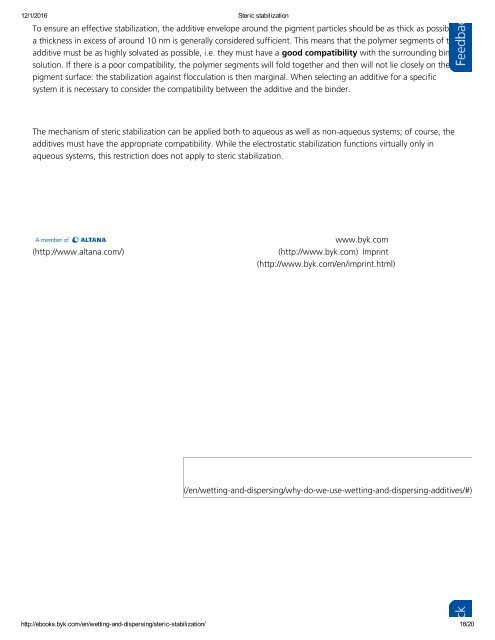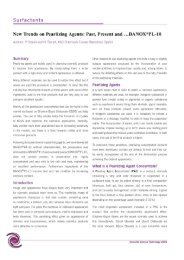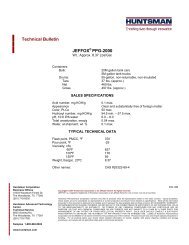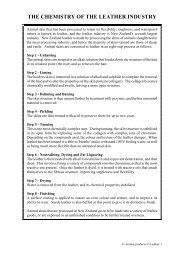Pigment Dispersion perparation
You also want an ePaper? Increase the reach of your titles
YUMPU automatically turns print PDFs into web optimized ePapers that Google loves.
12/1/2016 Steric stabilization<br />
To ensure an effective stabilization, the additive envelope around the pigment particles should be as thick as possible –<br />
a thickness in excess of around 10 nm is generally considered sufficient. This means that the polymer segments of the<br />
additive must be as highly solvated as possible, i.e. they must have a good compatibility with the surrounding binder<br />
solution. If there is a poor compatibility, the polymer segments will fold together and then will not lie closely on the<br />
pigment surface: the stabilization against flocculation is then marginal. When selecting an additive for a specific<br />
system it is necessary to consider the compatibility between the additive and the binder.<br />
The mechanism of steric stabilization can be applied both to aqueous as well as non-aqueous systems; of course, the<br />
additives must have the appropriate compatibility. While the electrostatic stabilization functions virtually only in<br />
aqueous systems, this restriction does not apply to steric stabilization.<br />
(http://www.altana.com/)<br />
www.byk.com<br />
(http://www.byk.com) Imprint<br />
(http://www.byk.com/en/imprint.html)<br />
(/en/wetting-and-dispersing/why-do-we-use-wetting-and-dispersing-additives/#)<br />
http://ebooks.byk.com/en/wettinganddispersing/stericstabilization/ 18/20










![[Ulwick_A.W.]_Business_Strategy_Formulation_Theor(BookZZ.org)](https://img.yumpu.com/56355932/1/190x240/ulwick-aw-business-strategy-formulation-theorbookzzorg.jpg?quality=85)



![Desmond Morris - 2002 - Peoplewatching - The Desmond Morris Guide to Body Language (poor quality-double page)(290p) [Inua]](https://img.yumpu.com/54998318/1/189x260/desmond-morris-2002-peoplewatching-the-desmond-morris-guide-to-body-language-poor-quality-double-page290p-inua.jpg?quality=85)

